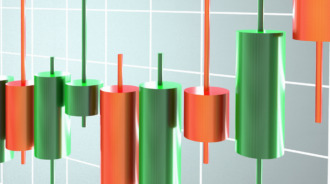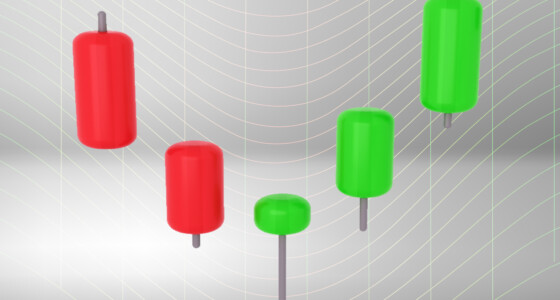

Technical analysis is an approach used by traders and investors to predict assets’ price directions based on historical price data. It implies using past price movements and values to build patterns and technical indicators that indicate the future price direction. This method of analysis, as we know it today, was presented by Charles Dow and the Dow Theory in the late 1800s.
Technical analysis is a comprehensive method that includes many tools. To use it effectively, you should always use these five tips.
1. Combine technical analysis and fundamental analysis
Fundamental analysis vs. technical analysis is an age-old debate. Some investors rely on fundamental factors that determine the market sentiment that drives asset prices. Others believe that trends change around and that prices repeat their previous fluctuations. Therefore, they think it’s enough to find signals of technical tools.
However, an experienced trader knows that it’s vital to combine the approaches. If you rely on technical analysis only, you risk failing in periods of significant market events. Patterns and indicators can’t predict the market sentiment that is based on an event’s outcome. Therefore, before you check alerts of technical tools, you should be aware of the upcoming fundamental factors that can increase volatility. At the same time, fundamental events don’t occur daily. Therefore, if you just use fundamental analysis, you risk reducing the number of potential trades.
2. Set of indicators
Technical analysis of the financial markets has numerous indicators. Your key goal is to determine which ones that suit your trading strategy. To do that, you need to practice them on a demo account. Open at least five trades on all timeframes you plan to trade and write down the results. The winning rate should be high. Still, don’t expect all trades to be successful. Professionals know it’s impossible to always succeed, even with a set of the most effective indicators.
Also, you should remember that indicators can’t work on all timeframes and in all trading circumstances. You should change their settings or replace one with another. Your task is to identify when the indicator’s accuracy rate is the highest and use it only when there are appropriate conditions.
3. Set particular goals

Even if you trade on low timeframes and plan to open and close a trade within minutes, you shouldn’t avoid take-profit and stop-loss orders. Many newbies believe that it’s enough to constantly monitor the market so they can execute the trade on a perfect level.
It’s a huge mistake for many reasons. The major one is emotions. If you are a beginner, you don’t know how to deal with emotions. The price fluctuates constantly. It will rise and fall during the period of your trade. All beginners experience a feeling of greed. They don’t want to close a trade because they hope the price will reach a better level. But the market turns around, and they simply fail. Therefore, it’s vital to set certain levels where you will exit the market.
Take-profit and stop-loss orders are determined with technical analysis. Stick to them until you have enough experience to use trailing levels that can be changed in accordance with the current market situation.

4. Use ranges
Technical analysis is used to identify entry and exit points. However, even in a low-volatility market, you won’t be able to define the exact level at which a candlestick will open and close. Therefore, professional traders use ranges. A range consists of two prices placed close to each other. Too wide ranges won’t allow you to determine entry and exit points correctly.
If you analyze a chart and can’t find a good point because previous support or resistance levels are too narrow or wide (a common issue for stock technical analysis), you should define a range and take its average.
5. Combine timeframes
A well-known rule says to check the price movements on three consecutive timeframes. For instance, if you want to trade on a 4-hour chart, you should check price movements on hourly and daily charts. The longer period will reflect the overall trend, while the lower timeframe will show whether there are meaningful patterns that may affect the price movement soon.
Remember that every chart will have its own signals. Thus, if there is a buy signal on the 4-hour chart, there can be a sell signal on the hourly chart. You should consider signals on the timeframe you trade on and use two others just to understand the overall picture better.
Tips and risk factors
There are always risks involved in trading. Do your research and consider the following:
– Backtest your trading strategies on past data;
– Trade in a demo account before risking real funds;
– Be flexible about scalability;
– Request free trading account trials to choose the best one for your needs;
– Expand as you move along, don’t go all in at once;
– Gain an understanding of technical analysis.
Choose the right approach
The two approaches to technical analysis are the bottom-up approach and the top-down approach. Typically, the top-down approach is used by traders who tend to make short-term transactions, and the bottom-up approach is used by investors working on the long-term horizon.
Top-down
The top-down approach starts with the bigger picture, it includes a macroeconomic analysis that considers the economy in its entirety and then goes on to analyze individual securities. From the economy as a whole to the sector, and then companies, if stocks are the subject of discussion. This approach is applicable for traders who are interested in short-term gains rather than trades that work in the long-term. For instance, a stock that broke out from their 2-month moving average may be of interest to a trader with a top-down approach.
Bottom-up
In contrast to the top-down approach, the bottom-down is focused on individual stocks rather than a bird’s-eye view of the economy. A specific stock is analyzed to find possible entry and exit points. For instance, an undervalued stock that is trending down may be examined for a potential entry point, since it may be bottoming out. This approach is useful for traders who seek to have a long-term outlook on their trades.
Takeaway
Technical analysis is a very effective method for price determination. However, it includes numerous tools. Therefore, you should constantly improve your skills to implement those tools correctly.









